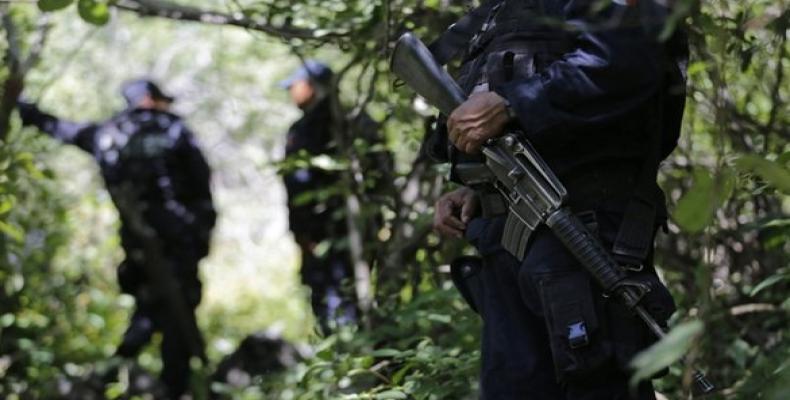Mexico City, October 29 (RHC-NNN) –- More bodies have turned up in Mexican graves, but there is still no news of the 43 students who went missing last month after a clash with the police.
Based on statements from four people arrested Monday, authorities came upon the new location in Cocula, a town about 10 miles from where the students last were seen. Testing still needs to be done to determine if the new site has the missing students' remains.
The discovery of the latest mass grave brings the total number of clandestine burial sites up to 12 around the hills of Pueblo Viejo in the municipality of Iguala, leading many observers to reflect on the long history of institutional violence and corruption that has plagued Guerrero.
The 43 students from a local teacher’s college disappeared after a clash with police in Iguala, about 80 miles southwest of Mexico City.
After detaining the students, local police officers allegedly took them to a police station and then on to Cocula, Mexican Attorney General Jesus Murillo Karam said earlier this month.
For decades, Guerrero has served as a main conduit for drugs moving north into the United States –- due in part to its access to the Pacific Coast and its overall sparse population – and with it a deep-seated culture of corruption has emerged in the state’s local political offices and police forces.
Arrest warrants have been issued for the missing Iguala Mayor José Luís Abarca and his wife, María de los Angeles Piñeda, on allegations that they ordered two local police forces to stop the students from disrupting a political event the day of the disappearance.
Piñeda reportedly has ties to the local Guerreros Unidos gang and dozens of police officers with links to the gang are part of the 56 people already arrested in connection to the incident. An arrested gang leader claimed that Piñeda was “the main operator of criminal activities" in Iguala and that the mayor received payments of 2 million to 3 million pesos ($150,000-$220,000) every few weeks, as a bribe and to pay off his corrupt police force.
While bloody death tolls and ubiquitous violence are nothing new in a country that has seen an estimated 106,000 people killed in drug violence since 2006, the disappearance of 43 college students has shaken the country and spurred widespread protests across the country.
Protesters last week burned down Iguala’s city hall and Guerrero Gov. Angel Aguirre stepped down under heavy criticism of the state's handling of the case and its political support of Abarca. Also last week, tens of thousands marched down Mexico City's main avenue demanding the return of the missing students.
The protests have even extended to New York City, where a group of Mexican-Americans have shown up at the Mexican consulate to urge the government do more to find the missing students and demand that Mexican President Enrique Peña Nieto step down over the growing scandal.
Some experts say that the reason that the students’ case has drawn such national and international attention is because, unlike the mass slayings of drug traffickers or those of poor migrants, these people were middle-class, college students and the memory of the 1968 Tlatelolco massacre – where Mexican forces killed between 30 and 300 people in Mexico City 10 days before the start of the summer Olympic Games – is still embedded in many people’s minds.
More Bodies Turn up in Mexican Graves, but None of Missing 43 Students

Articles en relation
Commentaires
Laissez un commentaire
Tous les champs sont requisPlus de visites
- Les gouvernements de Cuba et du Honduras pour une plus grande coopération dans le domaine de la santé
- Des villes cubaines et chinoises signent une lettre d'intention pour renforcer les relations bilatérales
- Deuil en Amérique Latine pour le décès du Pape François
- Le Venezuela et la Chine révisent leurs alliances en matière d'énergie et d'investissement
- Trump s'en prend à la Chine pour avoir refusé des avions Boeing

